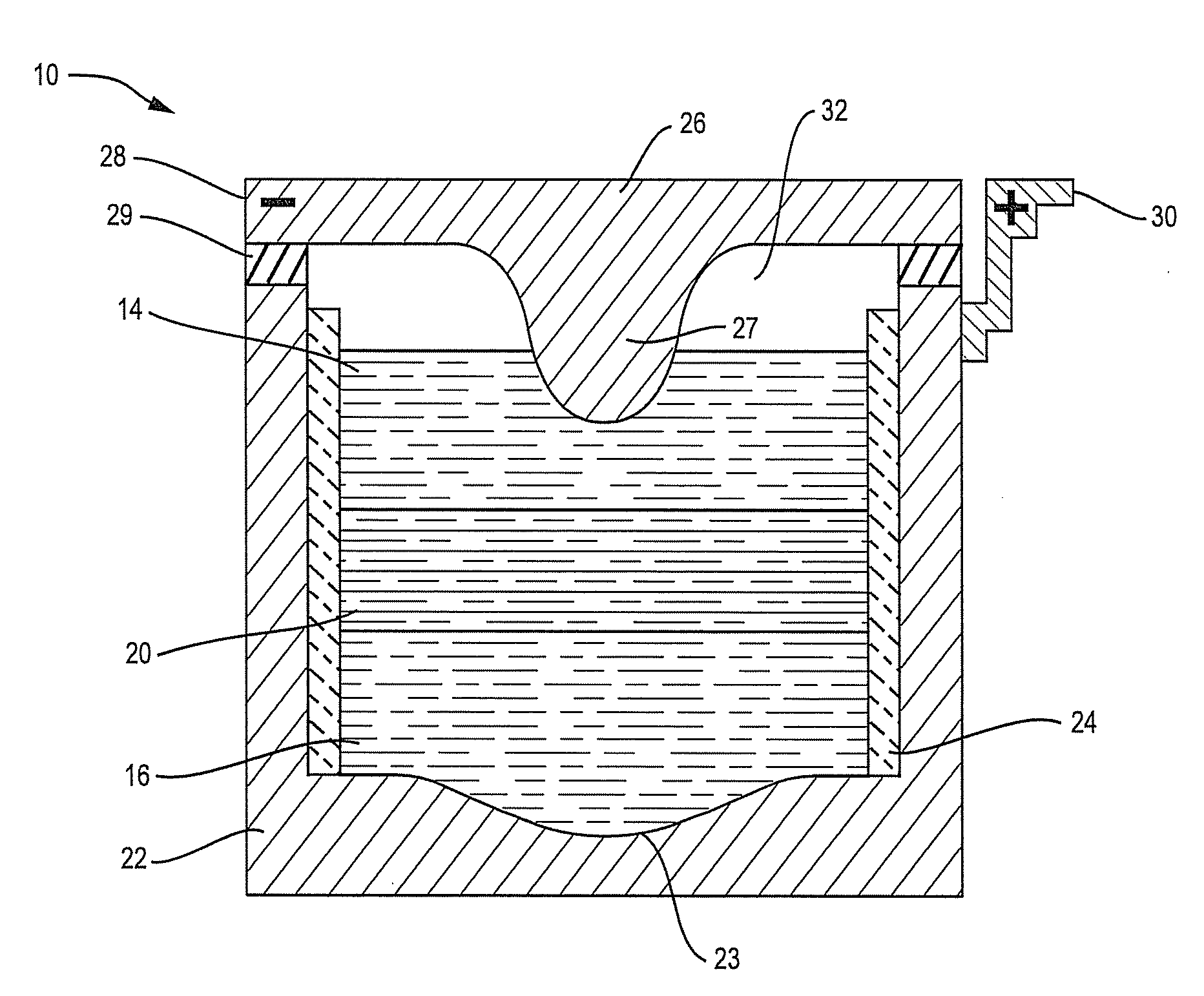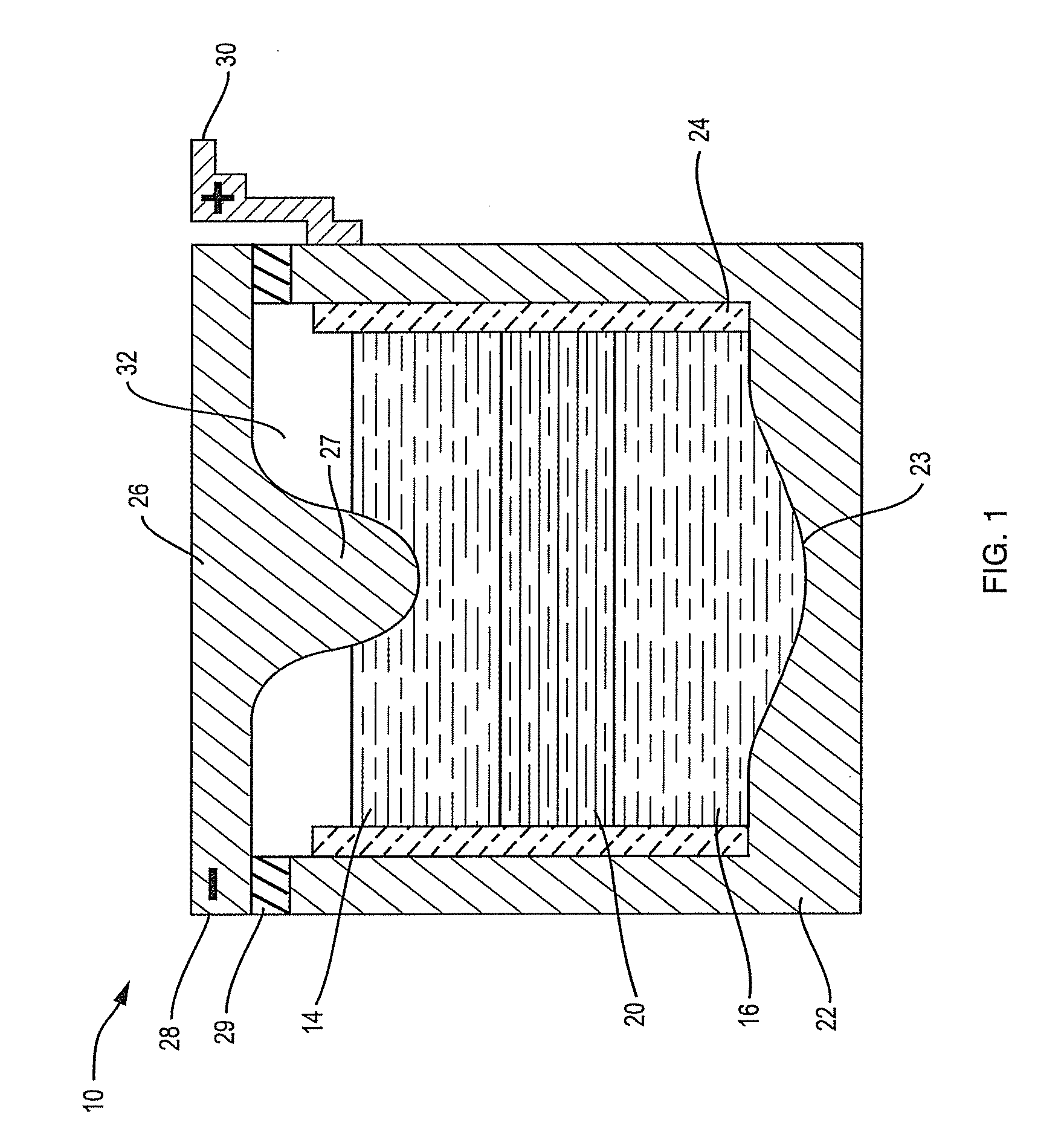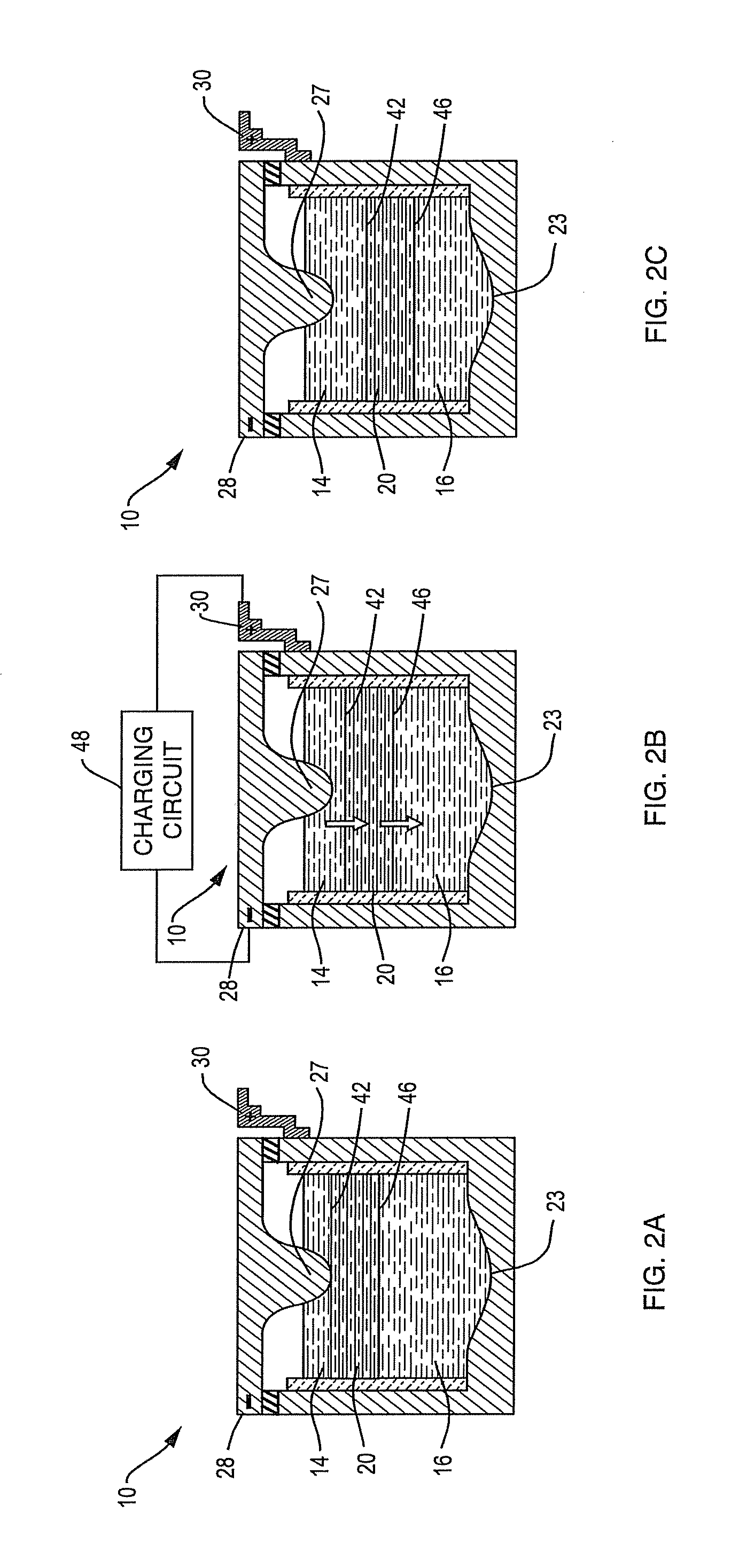Liquid electrode battery
- Summary
- Abstract
- Description
- Claims
- Application Information
AI Technical Summary
Benefits of technology
Problems solved by technology
Method used
Image
Examples
Embodiment Construction
[0028]It will be understood that as used herein, “battery” may encompass individual electrochemical cells or cell units, comprising a positive electrode, a negative electrode and an electrolyte, and configurations comprising a plurality of electrochemical cells. With reference to FIG. 1, an alkaline earth metal ion energy storage cell, or battery, indicated generally at 10, incorporates three distinct liquid constituents: a molten metal body 14 that serves as negative electrode, also referred to as the active metal electrode; an electronically conductive multi-elemental liquid body 16 that serves as positive electrode, also referred to as the alloy electrode; and an intervening ionically conductive electrolyte 20.
[0029]The electrically conductive liquid layers 14, 16 and 20 are confined in an electronically conductive container 22 which illustratively provides mechanical support to an insulating inner sheath 24. The sheath 24 prevents shorting by electronic conduction between the ne...
PUM
 Login to View More
Login to View More Abstract
Description
Claims
Application Information
 Login to View More
Login to View More - R&D
- Intellectual Property
- Life Sciences
- Materials
- Tech Scout
- Unparalleled Data Quality
- Higher Quality Content
- 60% Fewer Hallucinations
Browse by: Latest US Patents, China's latest patents, Technical Efficacy Thesaurus, Application Domain, Technology Topic, Popular Technical Reports.
© 2025 PatSnap. All rights reserved.Legal|Privacy policy|Modern Slavery Act Transparency Statement|Sitemap|About US| Contact US: help@patsnap.com



